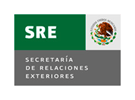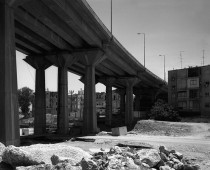
Mexico has a deep-rooted tradition of photography as a means of expression. The innovating impulse given in the second half of the 20th century by photographers such as Manuel and Lola Álvarez Bravo, Agustín Jiménez, Gabriel Figueroa, Nacho López, and Mariana Yampolsky put Mexican photography on the international map, where it is still very strongly present today.
The ‘Mundos mexicanos: 25 Contemporary Photographers’ exhibition, curated by Alejandro Castellanos, presents a number of the most significant works of recent decades. Roughly half of these belong to the collections of the Centro de la Imagen, which was established in 1994 with the mission of acquiring photographs and promoting photography in Mexico.
Since Mexico’s formation as a country in the beginning of the 19th Century, the necessity to bring cohesion to the people of a diverse and complex territory led their leaders to develop the specific notion of a “Mexican Culture”. Nevertheless, two hundred years after the founding of the nation, there is no one identity of “The Mexican”, but indeed many worlds that live within this idea. With the passing of time these worlds have changed their own perspectives and locations, and include foreign and even imaginary territories. This is the idea that links these works of 25 artists from different generations, and that represents the thematic and stylistic diversity of Mexican contemporary photography.
Info
Opening day: 7pm 30 June
Dates: 1-31 July
Opening hours:
Mon to Sat 10-6pm

Sebastian Guinness Gallery
Connaught House, 1 Burlington Road, Dublin 4.
Location Map
View PhotoIreland Festival 2011 in a larger map
The outbreak of the Mexican Revolution, which happened exactly a century ago, completely changed the politics of the country. The post-revolutionary regime that lasted until the end of the 20th Century developed and promoted the idea of “The Mexican”, a unitary mythology based on the integration of two cultures, the pre-Hispanic and the Spanish. A new post-nationalist story emerged near the beginning of the 21th Century, due to the deep transformations that have taken place not only in the areas of politics and the economy, but, above all, in culture. This dynamism motivated artists to develop a vision not anchored in the past, but in the present, a convulsive time charged with energy whose complexity impedes the profiling of future tendencies, even as they inevitably enter into a greater integration with the world.
There are three ways in which Mexican Worlds deals with these questions: the individual, the community, and space; concepts that group these three as a whole as seen in the work of the exhibit’s 25 artists. This exhibit looks to relate and present to the public a series of works characterized by creative autonomy.
The works of nine of the artists in this exhibit are from the collection of the Centro de la Imagen. A public entity founded in 1994, dedicated to research, education and promotion of photography in Mexico, the Centro was created by the artistic and photographic community with the support of the Consejo Nacional para la Cultura y las Artes (National Council for Culture and the Arts), and the Centro Nacional de las Artes (National Center for the Arts).
Individual
Delirium and knowledge, dream and death, irony and premonition, subjectivity and estrangement, all form a web of contrasts of the experience of the individual who looks at himself/herself in the mirror of the photographic image; a resource of affirmation and denial, of search and contradiction. All this is shown in the work of Patricia Aridjis, Cannon Bernáldez, Marianna Dellekamp, Daniela Edburg, Graciela Iturbide, Edgar Rolando Martínez and Fernando Montiel Klint, whose images have renewed, in the Mexican context, the idea of the photographer that openly presents his/her personal imaginarium.
Community
Mexican Photography has a strong established tradition of representation of the culture, habits, and beliefs of the communities that integrate the country. The criticism of social marginalization and the affirmation of the festive richness of popular culture are characteristic aspects of documentary essays produced by Mexican photographers, as is the review of rural isolation with its ancestral traditions, that contrasts with life in the big cities of Mexico and the USA, where the hybridization of culture is a daily fact. The diversity and complexity of the photographs of Lorenzo Armendáriz, Carlos Cazalis, Marco Antonio Cruz, Federico Gama, Maya Goded, Lourdes Grobet, Eniac Martínez, Francisco Mata, Dulce Pinzón and Yvonne Venegas show that the many Mexican worlds are not determined by the territory in which the photographers were born or lived, but by their imagination and their critical position.
Place
From the ominous to the parodic, passing through illusion and its allegories, the images of Yolanda Andrade, Dante Busquets, Livia Corona, Gabriel Figueroa Flores, Pedro Meyer, Gerardo Montiel Klint, Rubén Ortiz Torres and Gerardo Suter, assume a critical relationship with their surroundings; a distancing that allows them to reframe the certainties of the visible, thus representing space and architecture as precincts of memory, metaphors and ironies, through photographs either direct or staged. The relationship between the image, its physical support and its own relation with the site where it is presented is, in itself, one of the clues that characterizes these works; whose authors, in some cases, emphasize the possibilities opened by digital technology in the development of their proposals.
About the photographers
The 25 photographers that take part in this show are: Lorenzo Armendáriz, Carlos Cazalis, Livia Corona, Marco Antonio Cruz, Federico Gama, Maya Goded, Lourdes Grobet, Eniac Martínez, Francisco Mata, Dulce Pinzón, Yvonne Venegas, Patricia Aridjis, Cannon Bernáldez, Marianna Dellekamp, Daniela Edburg, Graciela Iturbide, Edgar Rolando Martínez, Fernando Montiel Klint, Yolanda Andrade, Dante Busquets, Gabriel Figueroa Flores, Pedro Meyer, Gerardo Montiel Klint, Rubén Ortiz Torres, and Gerardo Suter.






















